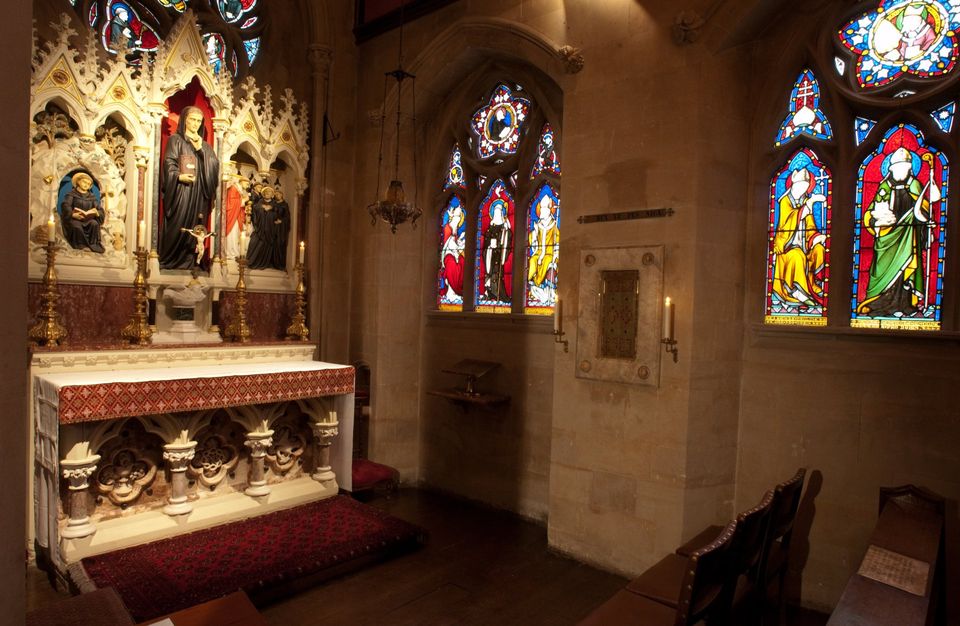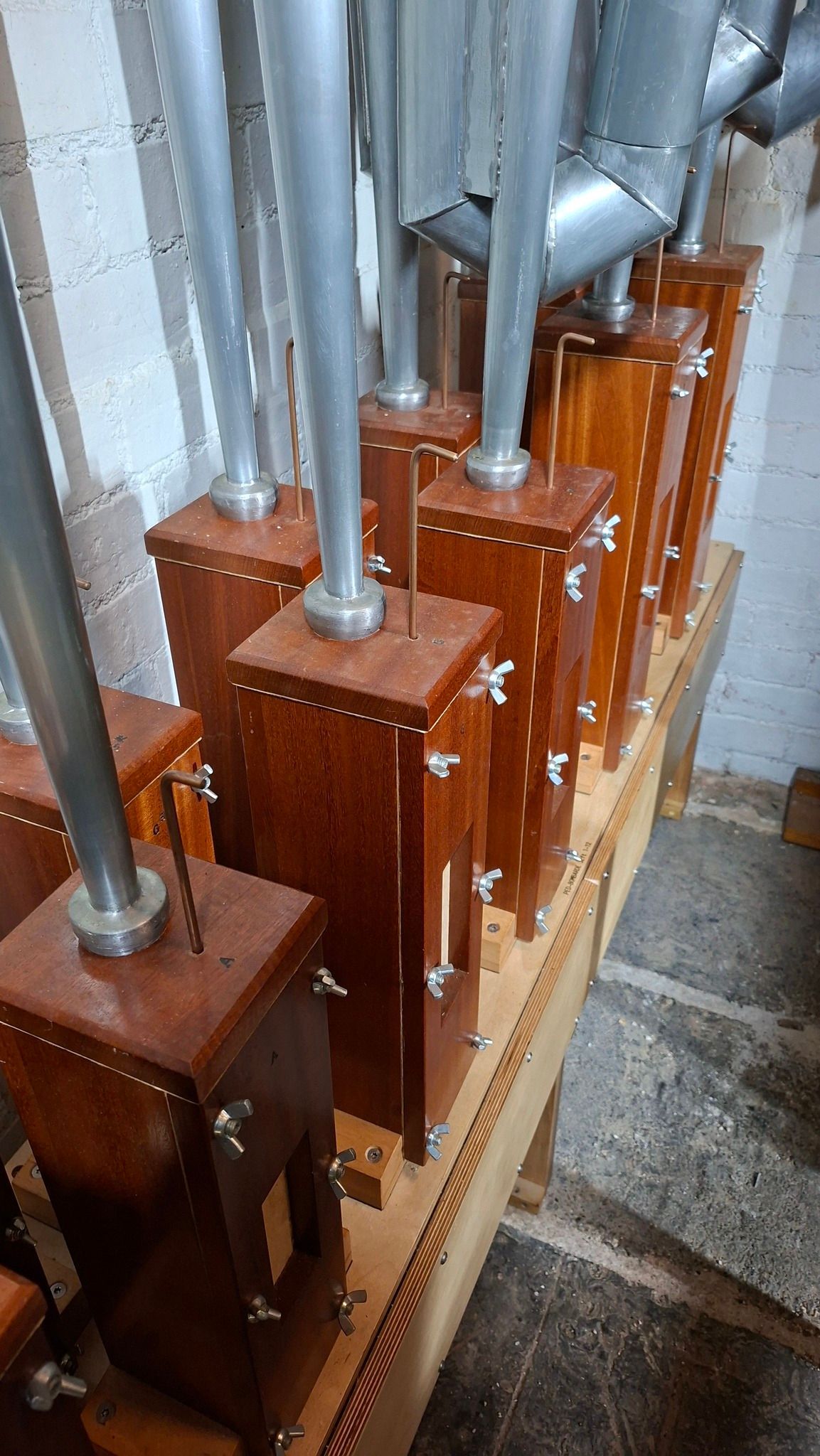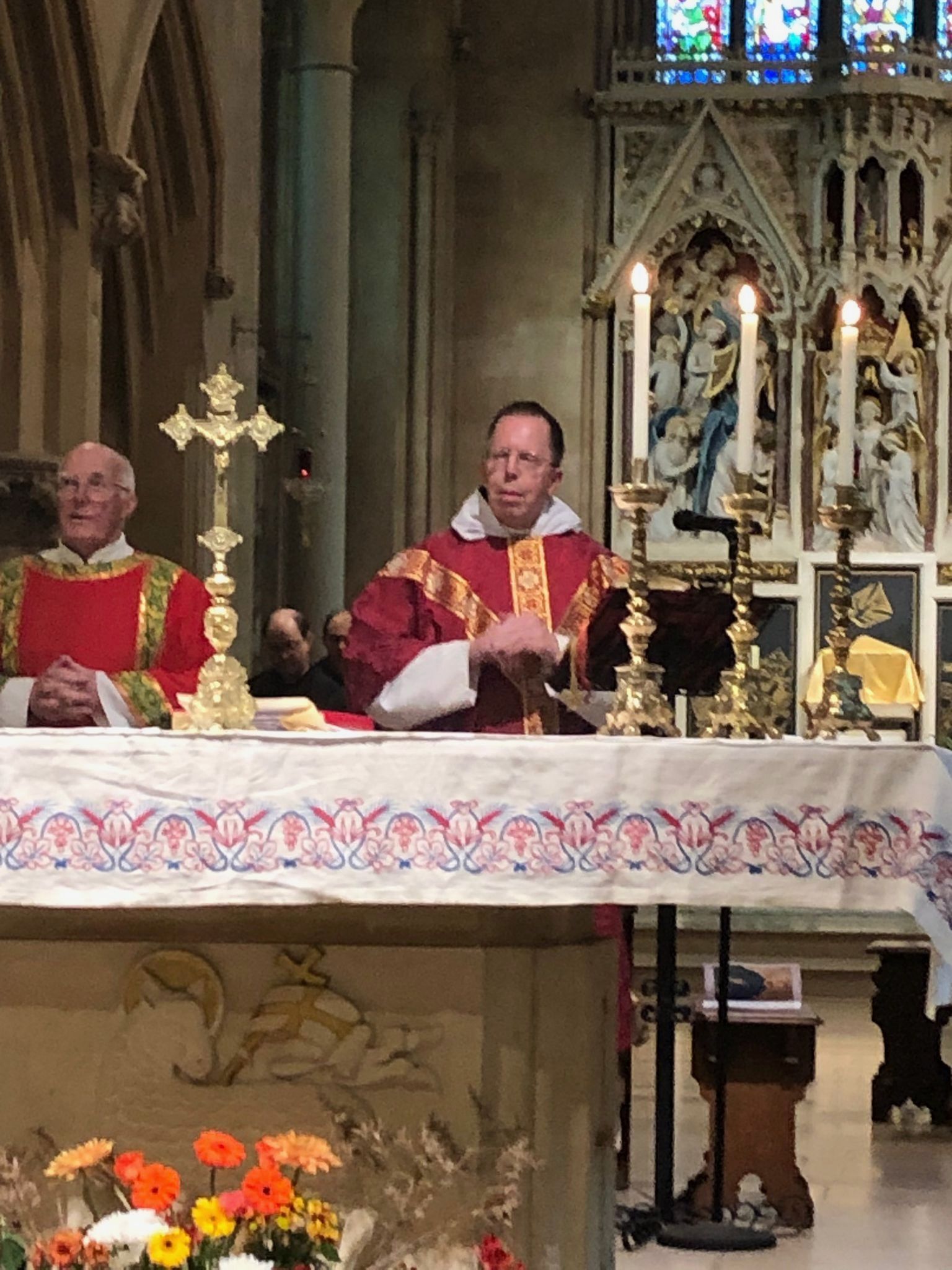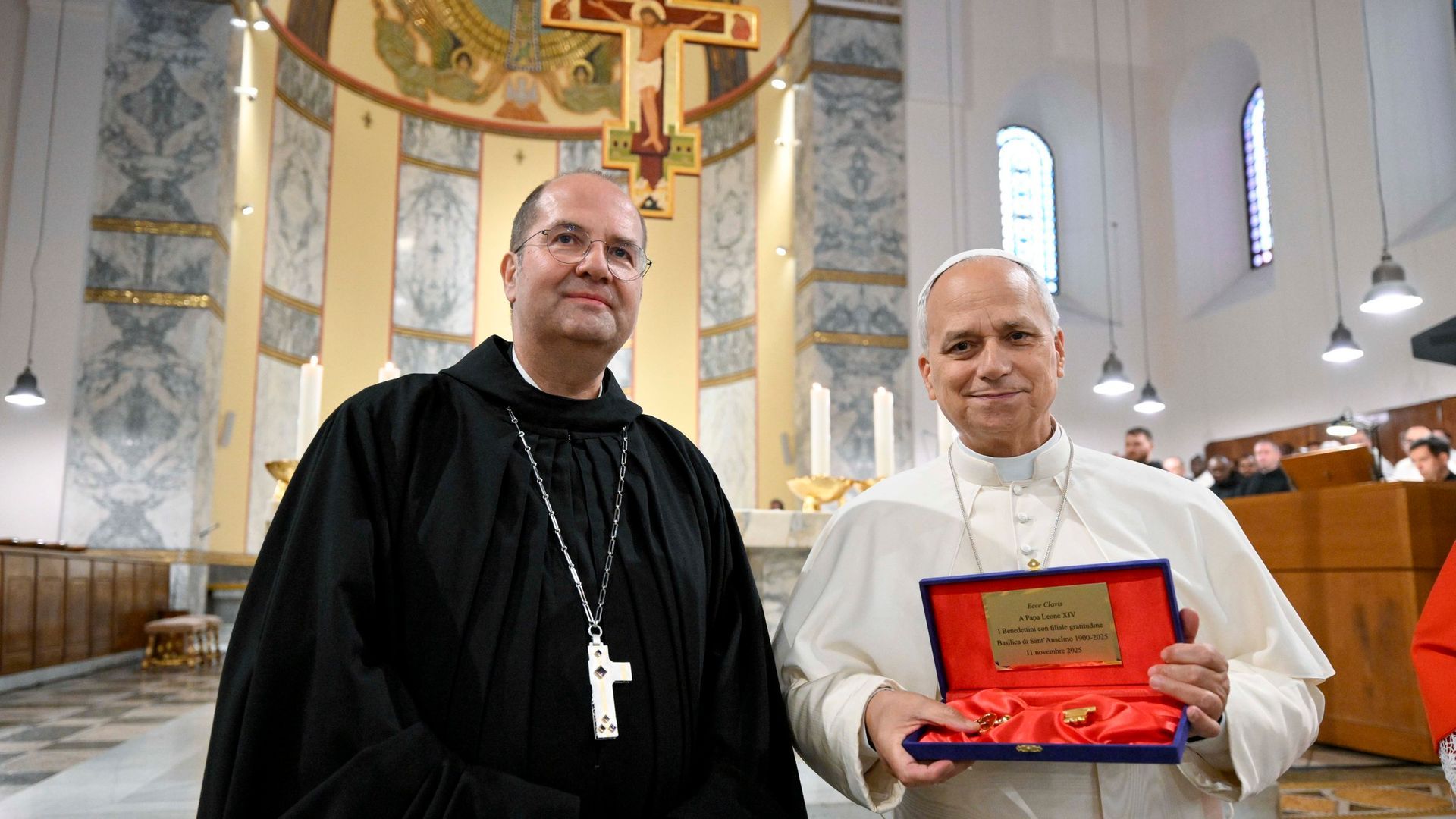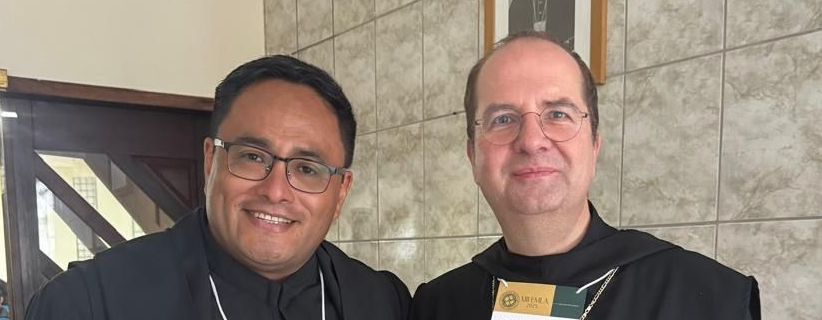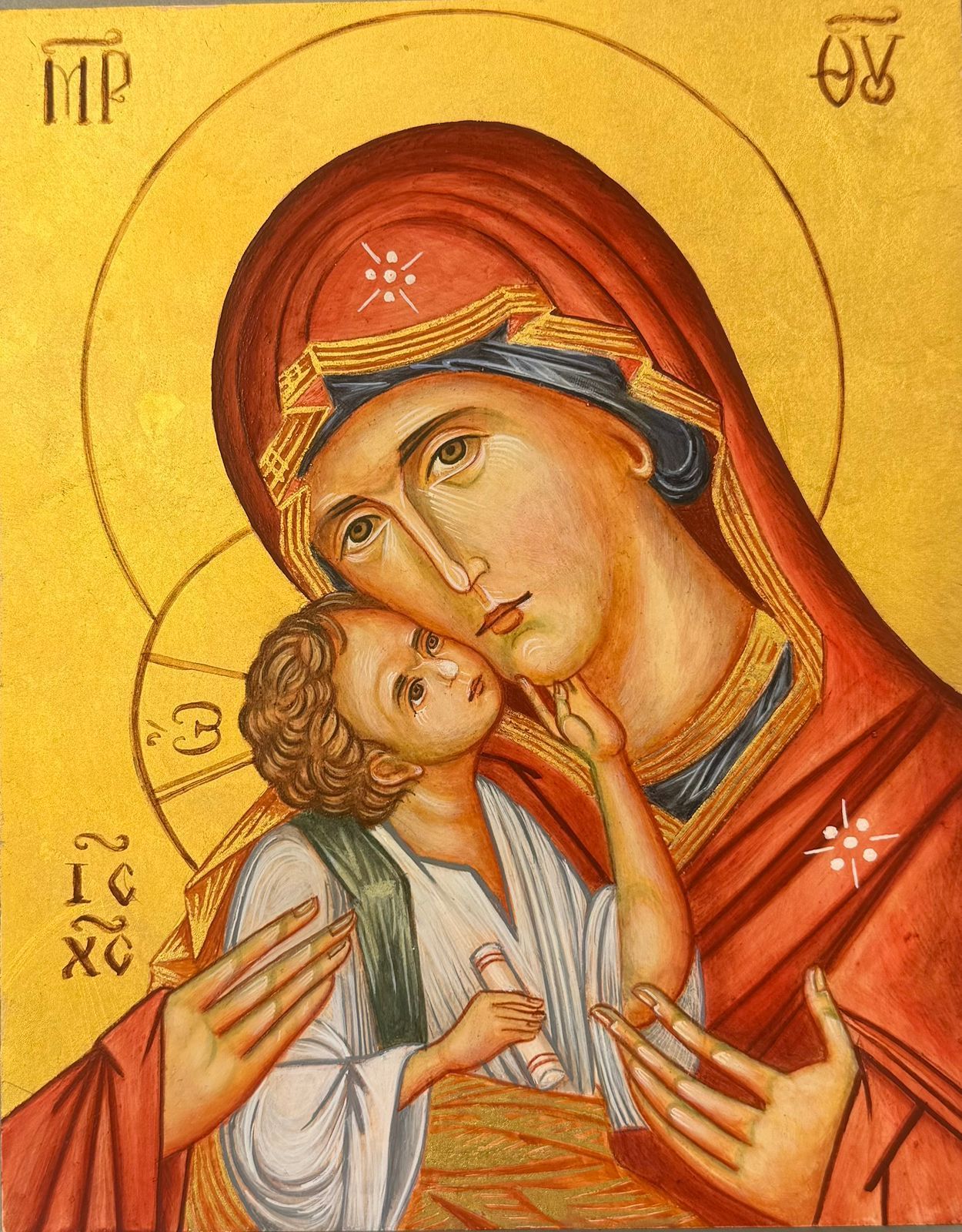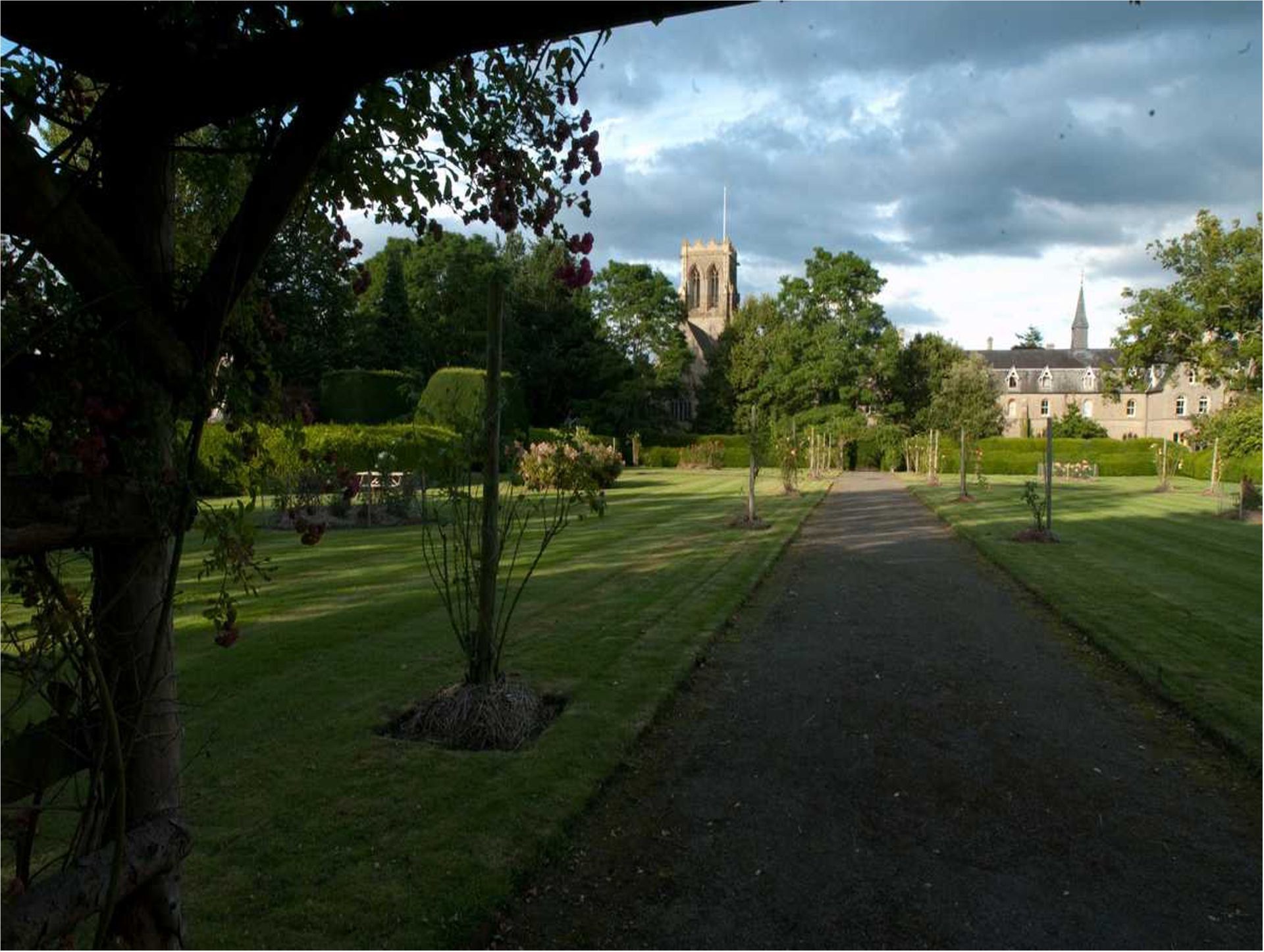Belmont and its History
Monastic History in Glass and Stone (1)
How the Chapel of St Benedict, in its stained glass and carving tells us something of the whole history of Benedictine Monasticism, the importance of the English Church, and the place of Belmont in this story.
On a bright summer’s afternoon, the small side-chapel of St Benedict in Belmont’s Abbey Church fills with warmth and colour. Sunlight pouring through the decorated glass makes the Chapel into a jewel-box of monastic history. The Benedictine tradition comes alive in bright colour. Benedict and Scholastica, Gregory the Great and Augustine - the two apostles of the English, Benet Biscop, Bede and Boniface, Paulinus of York, Anselm and Lanfranc: these are just some of the saints that tell the monastic story.
St Benedict’s Chapel, built from the designs of Edward Welby Pugin, was opened on the feast of All Benedictine Saints, the 13th November 1862, and completed in 1875 when the altar was installed. Its addition to the church was chiefly due to the zeal of Dom Alphonsus Morrall (the first Novice Master at Belmont) who had collected £1,000 for its construction, including glazed arches to connect it to the Lady Chapel. The Chapel was intended to be set apart for the Novices’ private use.
We might imagine one of Belmont’s early novices kneeling down there to pray. Belmont Cathedral Priory, as it then was, had just been consecrated with great solemnity on 4th September 1860, by Bishop Brown. The Pontifical Mass of Dedication had been sung by Dom Prosper Gueranger, the great abbot-founder of Solesmes in France, who had written in 1860 “Here, everyone loves Belmont, speaks of Belmont and prays for the Prior and for all the monastic family of St Michael.” What hopes and dreams were alive in that novice’s heart at this new dawning of monastic life in England after the terrors of the Reformation? Here the Benedictine life that had shaped the nation would live again, the chant would be sung again, God would be praised again, and a little something of the Reformation and its destruction would be undone.
Belmont was founded on a romantic monastic dream, yet the years ahead would require courage, sacrifice and discipline. This Common Novitiate and House of Studies would set a standard of observance that would assist the communities of St Gregory’s (at Downside), St Laurence’s (at Ampleforth) and St Edmund’s (still at Douai in France) find a settled pattern of monastic living after the struggles of penal days. Belmont would revive the model of the Cathedral Priory, that uniquely English institution where the monks were the canons of the Cathedral. One only has to look at the plans sketched by Edward Pugin of Belmont’s gothic buildings and dreaming spires to realise that this was a confident new age.
As the young novice knelt to pray, his heart must have been filled with the sense of fresh possibilities for monastic life and mission. Surrounded by the great saints of the monastic tradition he could only be inspired afresh by the great monastic heritage of these isles. In these saints we too can see something of the whole monastic story. In the next entry we will take up the story of Benedictine monasticism beginning with the figure of St Benedict himself.

